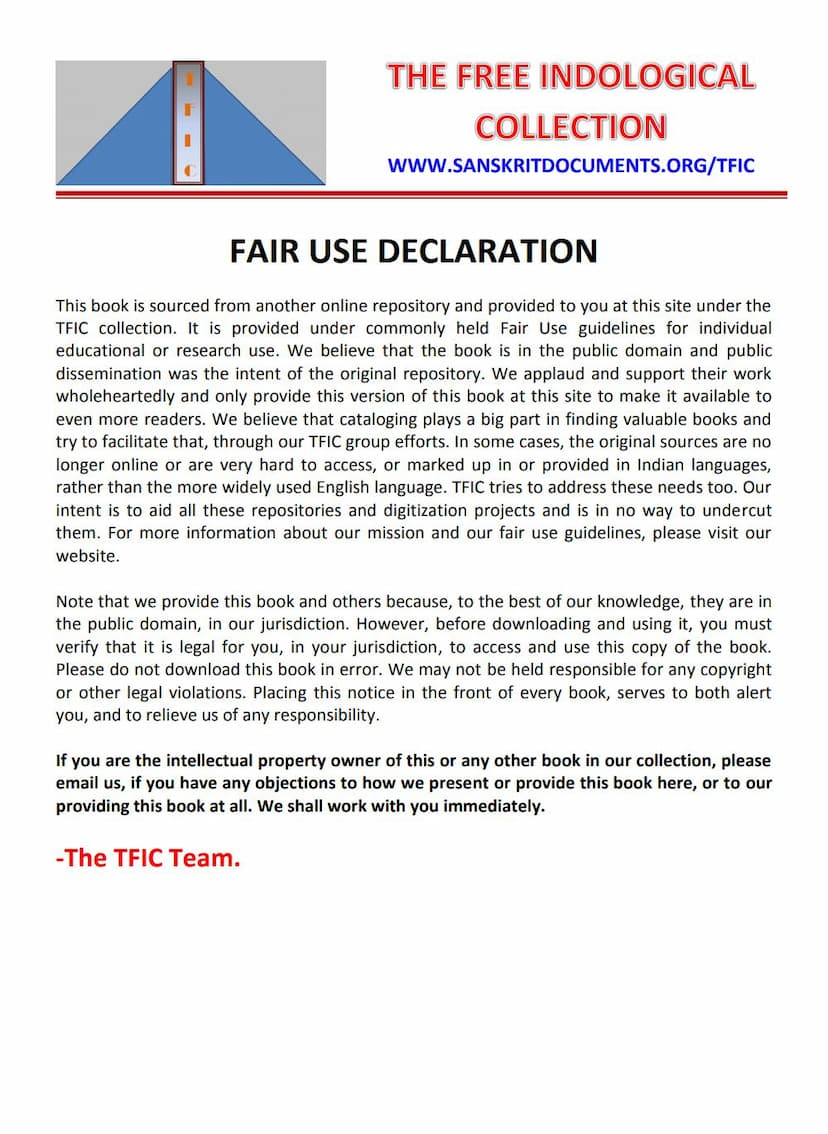Jain Granth Prashasti Sangraha
Added to library: September 2, 2025

Summary
Jain Granth Prashasti Sangrah (Part II) - A Comprehensive Summary
Book Title: Jain Granth Prashasti Sangrah (Part II) Author: Parmanand Jain Shastri Publisher: Veer Seva Mandir Society, Delhi Publication Date: June 1963
This book, "Jain Granth Prashasti Sangrah (Part II)," compiled by Parmanand Jain Shastri and published by Veer Seva Mandir Society in Delhi, is a significant collection of Prashastis (inscriptions or eulogies) found at the beginning and end of Apabhramsa Jain manuscripts. These Prashastis are invaluable for historical research as they provide crucial information about Jain authors, their works, patrons, the historical periods in which they lived, and the social and religious milieu of those times.
Key Aspects and Contents:
-
Purpose and Scope: The primary aim of this collection is to shed light on the Apabhramsa literature of the Jaina tradition. The Prashastis serve as primary source material, offering details that are often unavailable in the main texts themselves. They help in dating manuscripts, identifying authors and their patrons, understanding the lineage of scholars, and tracing the development of the Apabhramsa language and its literature.
-
Content: The book contains Prashastis from 122 Apabhramsa Jain works. These inscriptions are rich in historical data, including:
- Biographical Information: Details about the authors (poets, scholars, monks), their gurus, their lineage, and their places of origin.
- Patronage: Information about kings, ministers, wealthy merchants (Shravakas and Shravikas), and other influential individuals who commissioned or supported the creation and preservation of these works. This reveals the socio-political environment and the role of Jainism in society.
- Religious and Social Context: Insights into religious practices, festivals, temple construction, idol installation, social customs, rituals, and the prevalence of certain beliefs and practices during the respective periods.
- Linguistic and Literary Details: Information about the language used (Apabhramsa), its development, the types of literary works (Mahakavya, Khandakavya, Katha, Raso, Charchari), metrics, and the interrelation of Apabhramsa with other Indian languages like Hindi and Rajasthani.
- Geographical Information: Mentions of various cities, regions, and libraries where these manuscripts were preserved and copied.
- Chronological Data: Dates, Samvats, and mentions of ruling kings and dynasties help in establishing the chronology of Jain literature and history.
-
Editor's Effort: Pt. Parmanand Jain Shastri dedicated considerable time and effort, spanning over twenty years, to collect this information from various Jain Bhandars (libraries) across India, including Delhi, Jaipur, Ajmer, and others. The introduction written by him is extensive (over 140 pages) and is supplemented by 15 appendices, making the work accessible even to those who cannot read Praorits, particularly Apabhramsa.
-
Significance of Apabhramsa Literature: The preface highlights the importance of Apabhramsa literature as a crucial link in the evolution of Indian languages, especially for understanding the early stages of Hindi. Jain scholars played a vital role in developing and preserving Apabhramsa literature, which often served as a bridge between Prakrit and modern Indian languages.
-
Reviews and Forewords: The book is highly regarded by scholars. The foreword is written by Dr. Vasudev Sharan Agrawala, and the preface in English is by Dr. Dasharatha Sharma. Both scholars commend the work's historical and linguistic value. L. G. Parab, Librarian of the Central Archaeological Library, New Delhi, reviewed the book with great interest, noting the historical importance of the Prashastis from unpublished works and congratulating the editor on his excellent performance.
-
Structure: The book is structured with a detailed introduction covering the general value of Prashastis, the history and development of Apabhramsa, extant Apabhramsa literature, and information about its writers and their books. It is followed by the compilation of 122 Prashastis, and then appendices containing lists of authors, works, patrons, and other relevant historical details.
In essence, "Jain Granth Prashasti Sangrah (Part II)" is a monumental scholarly work that meticulously extracts and presents vital historical and cultural information embedded in the Prashastis of Apabhramsa Jain manuscripts. It serves as an indispensable resource for scholars of Jainism, Indian languages, literature, history, and culture.